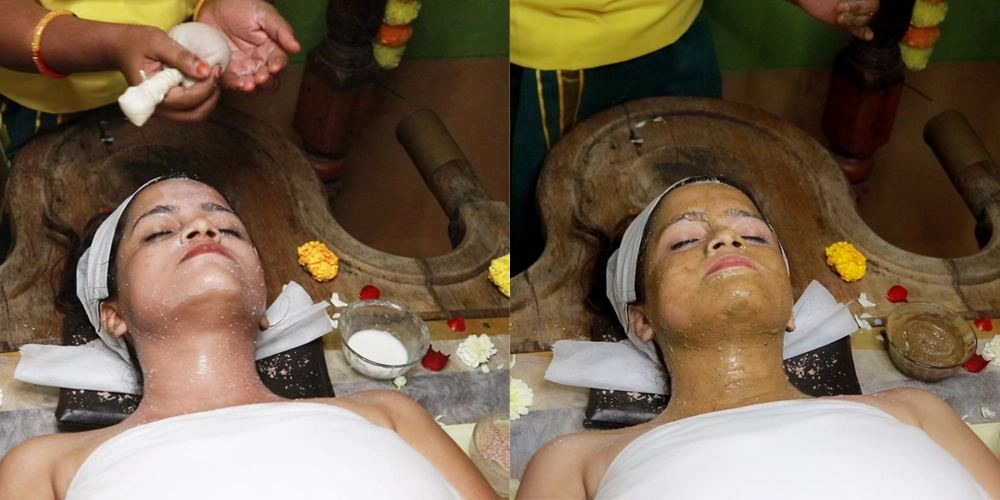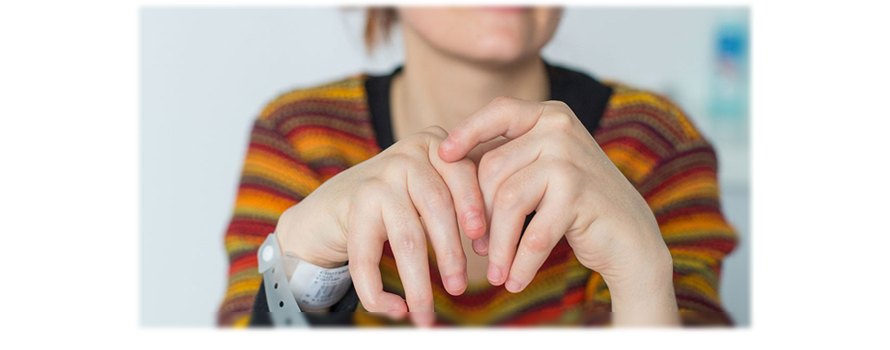Indian traditional medicine serves as the foundation for ayurvedic skin care. The practice offers Ayurvedic facials, remedies for skin conditions, and herbal skin care products. There are various Ayurvedic skin care formulations available today, but for the greatest results, it’s crucial to understand the quality and ingredients of your products. It is thought that ayurvedic home remedies for skin care target particular skin types and needs. Here is a guide to Ayurvedic skin care explained by our Ayurvedic practitioners.
Understanding skin types
Skin type determines the Ayurvedic remedies for skin care.
According to Ayurveda, the three Doshas establish a person’s skin type. These bioenergetic or life energies make up the structure of the body and mind. They are:
- Vata (wind)
- Pitta (fire)
- Kapha (water and earth)
- Vata
A Vata-dominant person is said to have dry, rough skin that wrinkles easily if it is not moisturised frequently, according to Ayurvedic tradition.
At Birla Ayurveda, our doctors explain that Vata-type skin has less fat deposits and requires more moisturising on the inside as well as the outside.
They advise using moisturisers with oil as well as eating warm spices like ginger. Additionally, they claim that ashwagandha, a traditional Indian herb, might lessen skin dryness when included in a face mask.
- Pitta
High Pitta individuals frequently have oily skin that can be prone to rosacea and acne.
Aloe vera, turmeric, which has anti-inflammatory properties, and sandalwood are additional cooling ingredients that are necessary for this type of skin (which reduces pimples and redness).
- Kapha
The Kapha Dosha is distinguished by cold, oily skin that may be prone to breakouts, whiteheads, and water retention. Doctors advise using a dry brush to exfoliate, stimulate the lymphatic system, and remove clogs.
Additionally, they advise staying away from creams with oils and frequently using face masks.

Ayurvedic facials at home
- Ayurvedic facials use herbal remedies to address skin-related conditions.
- For particular skin types, some brands may provide Ayurvedic facial kits.
- These can be applied to a routine skincare regimen. For medicinal products, you should speak with an Ayurvedic doctor, nevertheless.
At Birla Ayurveda, our doctors advise a straightforward at-home facial and straightforward massage. All doshas should use sesame oil, according to our Ayurvedic doctors, whereas vata and pitta skin types should use almond oil. Simply use circular motions to massage the oil into the skin.
Ayurveda frequently uses Kumkumadi oil or Manjistha (Rubia cordifolia) oil with facial treatments. An older review of the research from 2011 suggests that manjistha oil may help treat acne because it is:
- anti-inflammatory
- antibacterial
- anti-androgenic
DIY Ayurvedic face mask recipes
Most Indian homes are likely to have the cooking supplies required for a traditional face mask on hand.
The most popular type of flour is Bengal gram (chickpea) flour. For a traditional Indian skin care recipe, you can make it into a paste by adding a pinch of turmeric, milk, lime juice, or rose water.
It’s crucial to keep in mind that different skin types necessitate various sorts of skincare, according to Ayurveda. Additionally, it’s crucial to get medical counsel if you have any worries about the components of a homemade face mask.
For Vata, Pitta, and Kapha skin types, our specialists advise using different face masks and following particular routines.
Vata face mask
Ingredients
- 1 tbsp. chickpea flour
- a pinch of turmeric powder
- 1/4 cup rose water, yoghurt, or cold milk
Directions
- Create a paste by combining the ingredients.
- Apply to the face and wait until it begins to dry around 10-15 minutes.
- Use lukewarm water to rinse.
- Apply an oil-based moisturiser to your skin. You can also use sesame oil.
Pitta face mask
Ingredients
- A quarter cup of aloe vera gel (make sure there are no other ingredients or additives)
- a few drops of rose water
- 1–3 cotton balls
Directions
- Cleanse your skin by dabbing a cotton ball dipped in rose water on it.
- Apply aloe vera gel to the skin and let it sit there for 10 to 15 minutes.
- Use lukewarm water to rinse.
- Use a mild moisturiser, such as geranium oil.
- Repeat two or three times per week.
Kapha face mask version 1
Ingredients
- 1 tsp. honey
- a pinch of turmeric powder
Directions
- Combine honey and turmeric powder.
- Apply to the skin, then wait 10 minutes before removing.
- Use warm water to rinse off.
Kapha face mask version 2
Ingredients
- Multani Mitti, also known as fuller’s earth
- Water
Directions
- Combine water and Multani mitti.
- Apply to the skin and let sit for ten to fifteen minutes.
- Rinse with lukewarm water.
Face mask for all skin types
Ingredients
- 2 tbsp. fine oat flour
- 2 tsp. almond flour
- A pinch of turmeric powder
- 2–5 drops of oil of your choice
Directions
- Combine the powdered ingredients.
- Add a couple of oil drops.
- Apply a heavy layer and let it sit on the skin for 15 minutes.
- Wash off with lukewarm water.
- The entire body may also be treated with this paste.

Panchakarma
Panchakarma, which translates to “five actions” in Sanskrit, is also advised by Ayurveda. This prolonged therapy is said to aid in the body’s detoxification process and prevent or treat illnesses, particularly those that affect the skin. Some people might not be able to utilise it, such as those who have a history of eating disorders.
There are five procedures in Panchakarma:
- Virechan: employing heated medicinal herbs, pastes, or powders to cleanse
- Vaman: Induced vomiting or purging under the influence of herbal medicine
- Basti: enemas or massages with warm oils
- Rakta moksha: Bloodletting, also known as blood detoxification
- Nasya: clearing the nose using herbal medicines, oils, and fragrances
You must see an Ayurvedic doctor for Panchakarma, typically in a hospital setting over the course of an overnight stay. The entire Panchakarma procedure normally takes at least 5 weeks.



